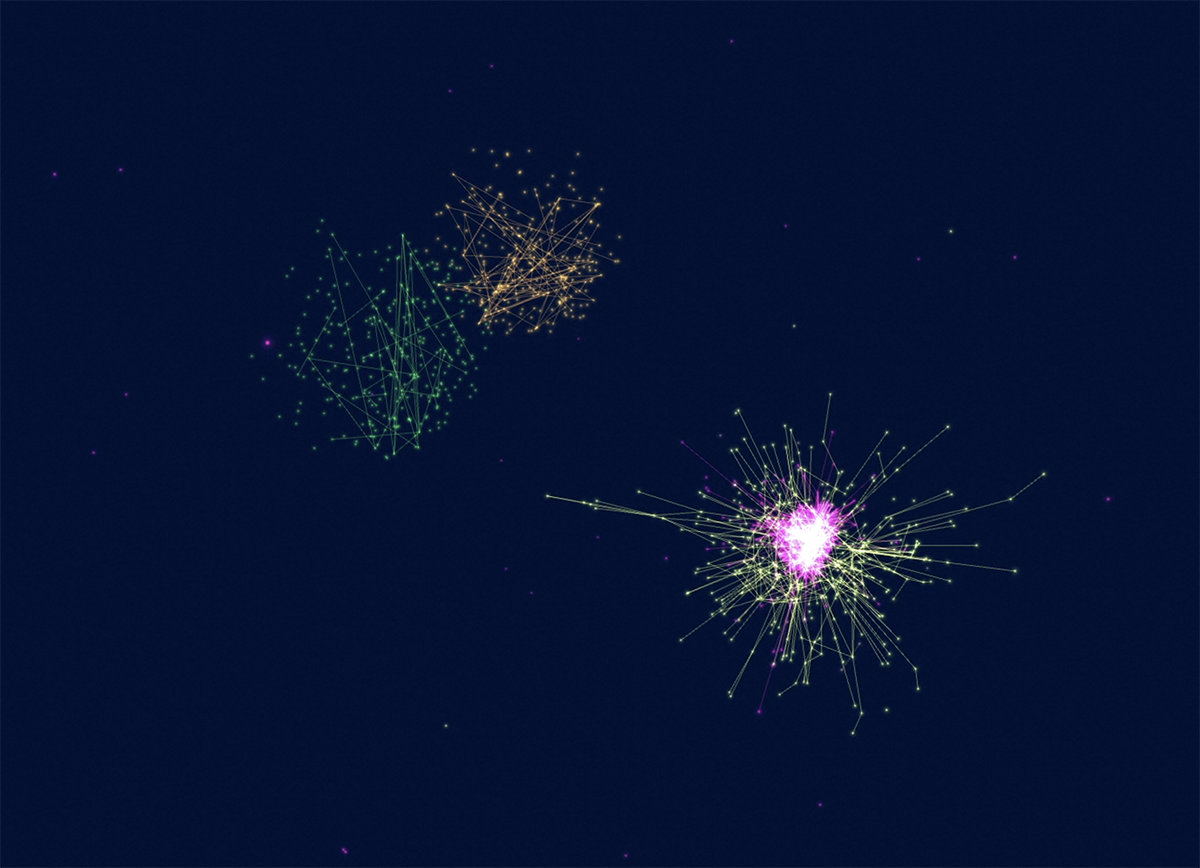The variations are hard to spot, as are the imperceptibly minute molecular differences between asthma patients. At the molecular level, each patient has her own unique manifestation of the disease. Yet, all have the same painful experience—they can’t breathe. In the still image there’s a feeling of suspended animation that lends the maps an appropriately asthmatic undertone. It reminds us that breath itself is stuck in the web of the disease.
The images showing dark-blue spectral fields with a light-color core are stills from the TEDMED videos, while the dark-core image was rendered in 2016 as a candidate for the cover of Network Medicine, a book co-edited by Barabási and published by Harvard University Press.
By highlighting the genes involved in asthma, indicated by the purple cluster, and COPD, shown in yellow, this image illustrates how the proteins linked to the same disease cluster in the same vicinity of the network. This image also traces the slightly different perspectives of the asthma disease module within the interactome.
The variations are hard to spot, as are the imperceptibly minute molecular differences between asthma patients. At the molecular level, each patient has her own unique manifestation of the disease. Yet, all have the same painful experience—they can’t breathe. In the still image there’s a feeling of suspended animation that lends the maps an appropriately asthmatic undertone. It reminds us that breath itself is stuck in the web of the disease.
The images showing dark-blue spectral fields with a light-color core are stills from the TEDMED videos, while the dark-core image was rendered in 2016 as a candidate for the cover of Network Medicine, a book co-edited by Barabási and published by Harvard University Press.











Contact
Social